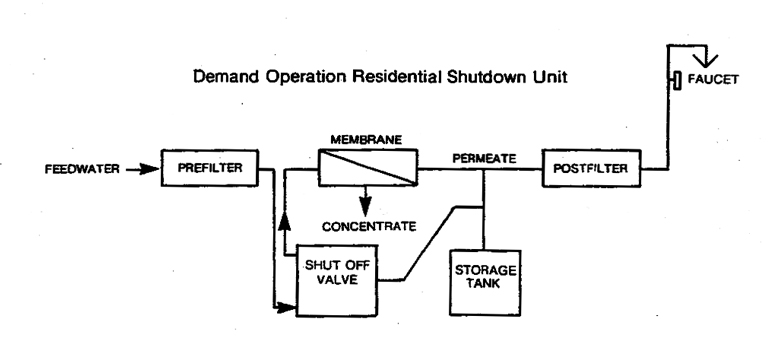![pwanniemedium[1]](http://www.purewatergazette.net/blog/wp-content/uploads/2012/05/pwanniemedium1-246x300.jpg) Pure Water Gazette Technical Wizard Pure Water Annie Explains How Water Moves Through An Undersink Reverse Osmosis Unit
Pure Water Gazette Technical Wizard Pure Water Annie Explains How Water Moves Through An Undersink Reverse Osmosis Unit
In modern home reverse osmosis units, tap water, driven by normal city water pressure, flows first through a carbon pre-filter, which removes organic contaminants including chlorine and its by-products.
Next, the water enters the reverse osmosis membrane, a very tight, sheet-like filter, that allows water to pass but rejects dissolved solids like sodium and impurities like lead and arsenic. Some of the water entering the unit is used to cleanse the membrane surface. This water, called brine or concentrate, flows to the kitchen drain pipes.
The purified water leaving the membrane, which is called permeate, is stored in a small storage tank until it is needed. When the RO unit’s ledge faucet mounted on the sink is opened, the purified water, or permeate, is forced by air pressure inside the storage tank through another carbon filter, which gives it a final polish, and from there to the ledge faucet.
This is a simplified description of a three-stage RO unit. Additional stages like sediment filters and additional carbon filters or specialty filters can be included. The simplified description omits a few very essential parts like flow control devices, check valves, and an automatic shutoff devices that stops the inflow of water when the storage tank is full.





